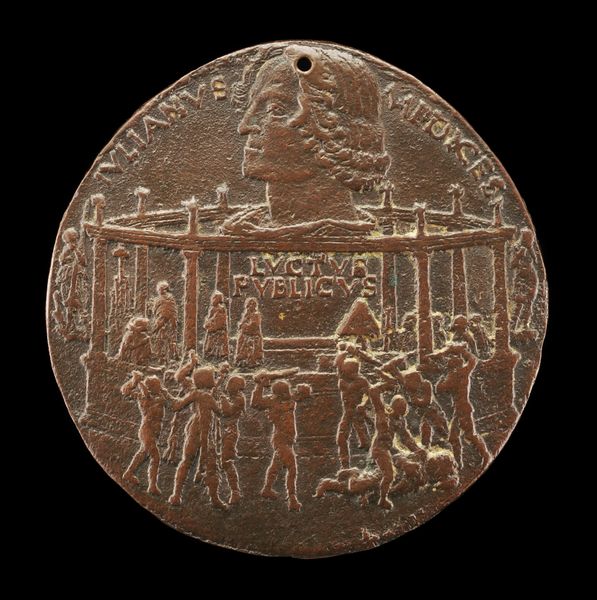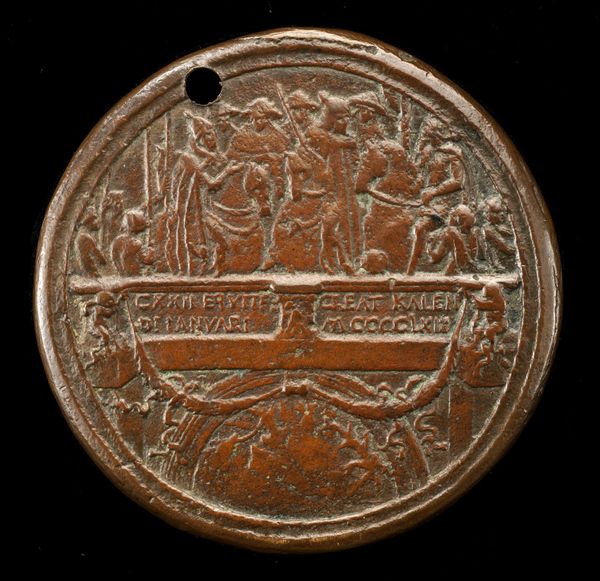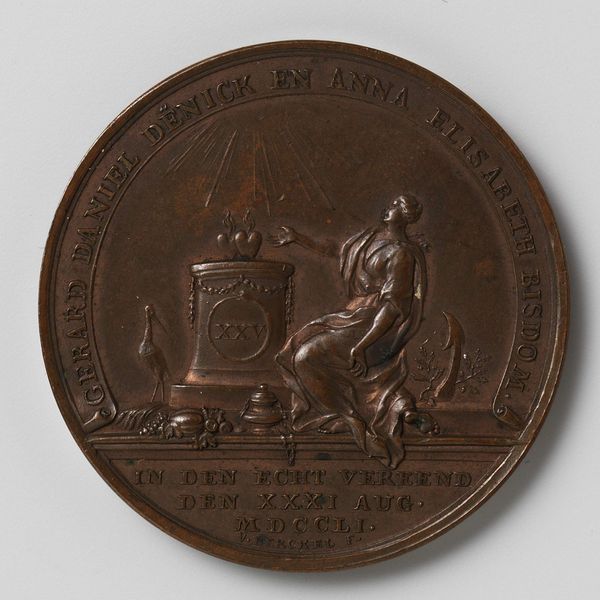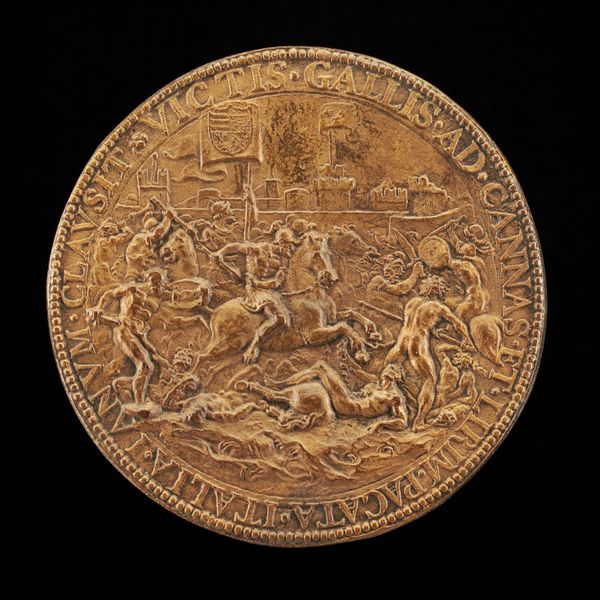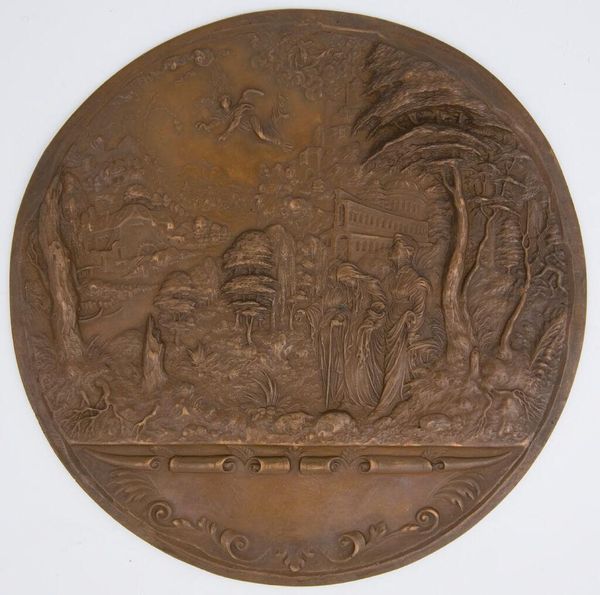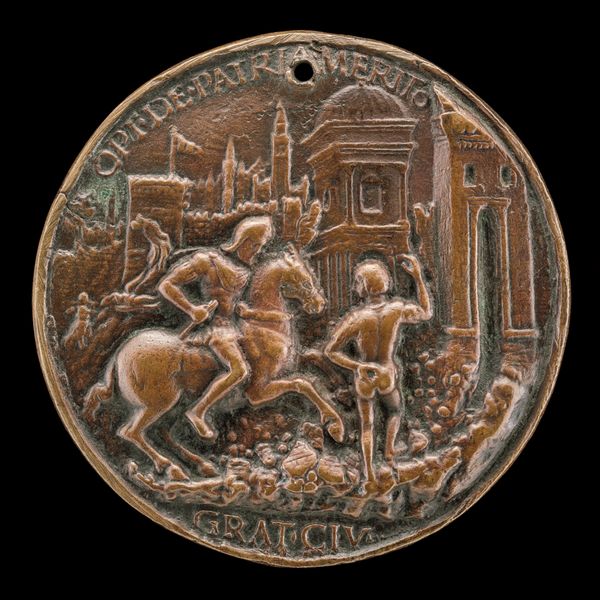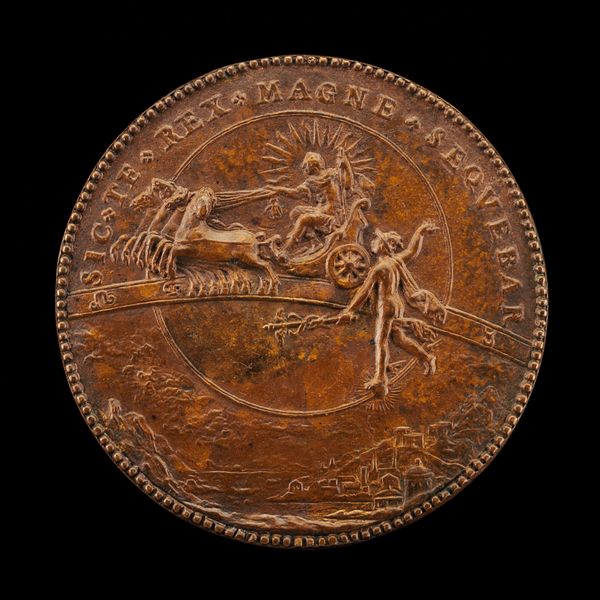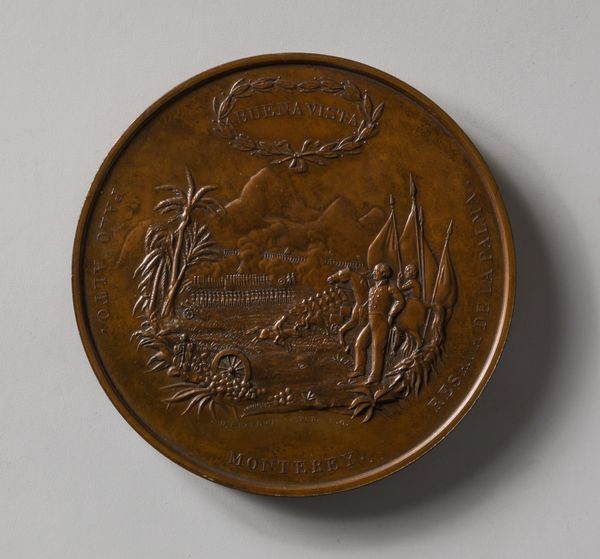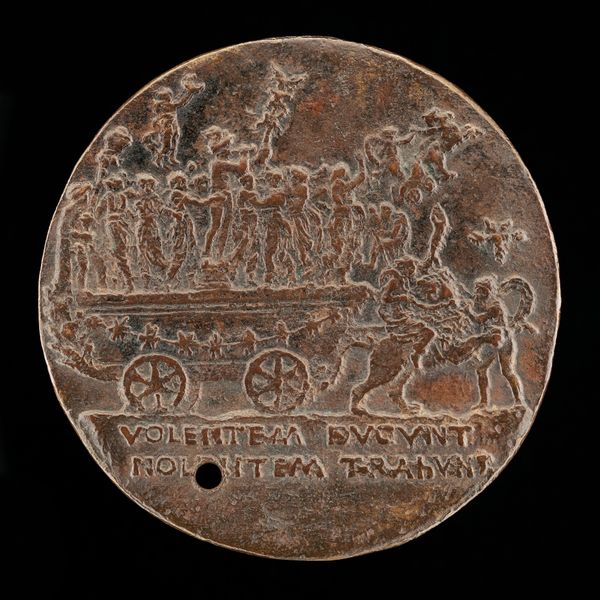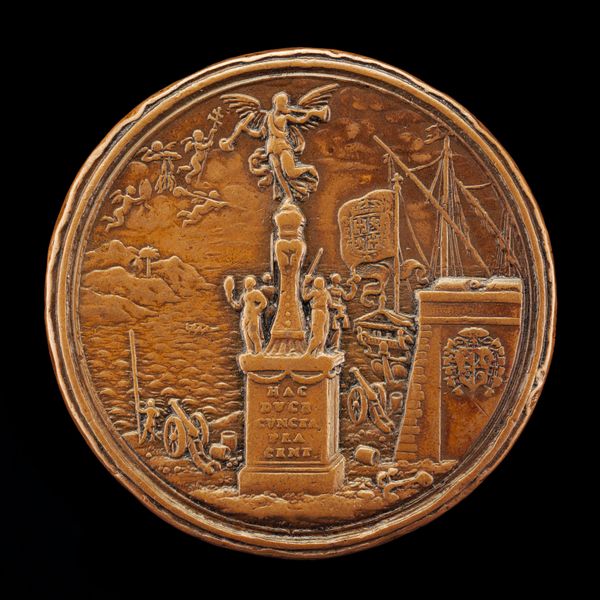![Queen Marie-Antoinette Led to the Guillotine [reverse] by Conrad Heinrich Küchler](/_next/image?url=https%3A%2F%2Fd2w8kbdekdi1gv.cloudfront.net%2FeyJidWNrZXQiOiAiYXJ0ZXJhLWltYWdlcy1idWNrZXQiLCAia2V5IjogImFydHdvcmtzLzUyYWI3MDc3LWUwYWEtNGQyYi1hNGE3LWU5ZDhmMGMxYTMyNC81MmFiNzA3Ny1lMGFhLTRkMmItYTRhNy1lOWQ4ZjBjMWEzMjRfZnVsbC5qcGciLCAiZWRpdHMiOiB7InJlc2l6ZSI6IHsid2lkdGgiOiAxOTIwLCAiaGVpZ2h0IjogMTkyMCwgImZpdCI6ICJpbnNpZGUifX19&w=3840&q=75)
Queen Marie-Antoinette Led to the Guillotine [reverse] 1793
0:00
0:00
carving, relief, bronze, sculpture
#
portrait
#
medal
#
neoclacissism
#
carving
#
narrative-art
#
stone
#
detailed texture
#
relief
#
bronze
#
stoneware
#
sculpture
#
carved
#
history-painting
Dimensions: overall (diameter): 4.8 cm (1 7/8 in.) gross weight: 44.18 gr (0.097 lb.) axis: 12:00
Copyright: National Gallery of Art: CC0 1.0
Curator: The stark scene rendered on this bronze relief is “Queen Marie-Antoinette Led to the Guillotine [reverse]” by Conrad Heinrich Küchler, created in 1793. The material itself contributes a certain gravitas, doesn't it? Editor: It does. Immediately, the density of the composition strikes me. It's incredibly detailed for such a small format, creating a claustrophobic feeling – appropriate, given the subject. The repetitive forms of the marching figures create a powerful visual rhythm leading the eye to Marie-Antoinette in the cart. Curator: Küchler, working within the conventions of neoclassicism, sought to create objects of enduring historical record and moral instruction. Medals like this one weren't simply commemorative; they served as tools of political discourse and memory making within revolutionary society. Editor: And consider the reversal inherent in the piece; she is led to the guillotine as if paraded. Visually, Küchler employs a limited depth of field, pushing all elements to the foreground, emphasizing the inexorable nature of her fate. The buildings in the background almost feel like they are pressing down on the scene. Curator: The bronze medium itself played a role. Easily reproduced, these medals circulated widely, spreading the revolutionary message to a broad audience. It democratized access to images of power and its overthrow, quite literally in the palm of your hand. There is also the implication of the economic value assigned to precious materials such as bronze and how a revolutionary object made out of the very fabric that created this power, is somewhat oxymoronic, isn't it? Editor: Indeed, the cold, unyielding nature of the bronze mirrors the inflexible justice meted out. There's a stark contrast between the highly rendered figures and the abstract architecture behind them. It pulls and pushes at my focus as I experience the anxiety in that era. Curator: Examining the medal offers insight into the ways revolutionary fervor utilized artistic media for propaganda. The bronze becomes a carrier of ideology, shaping public perception of a pivotal historical moment, as it moves to dismantle established societal structures. Editor: The artwork becomes a memento mori, the very shape a cyclical symbol reflecting the historical moment in infinite recurrence, as if we too will witness it time and again. The craftsmanship speaks to the skill and intention of Küchler. This prompts questions about my contemporary understanding of her complicated life. Curator: Absolutely. By examining both its materiality and historical context, we gain a richer understanding of the complex dynamics at play during the French Revolution. Editor: This exploration reveals the depth of intention behind even a seemingly simple historical representation.
Comments
No comments
Be the first to comment and join the conversation on the ultimate creative platform.
